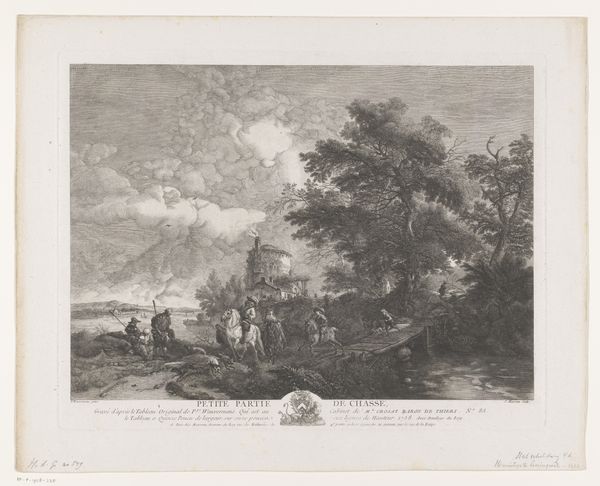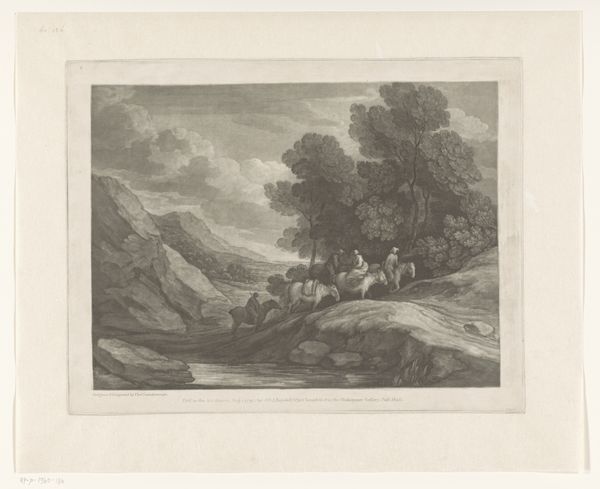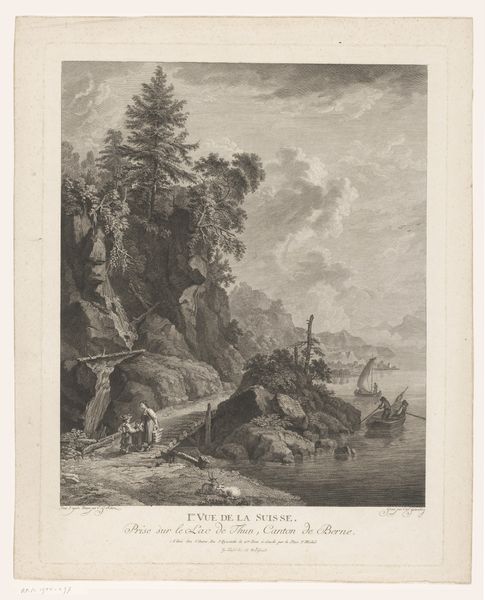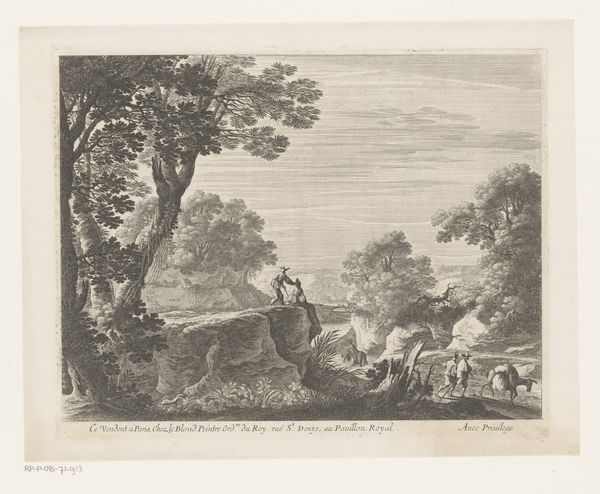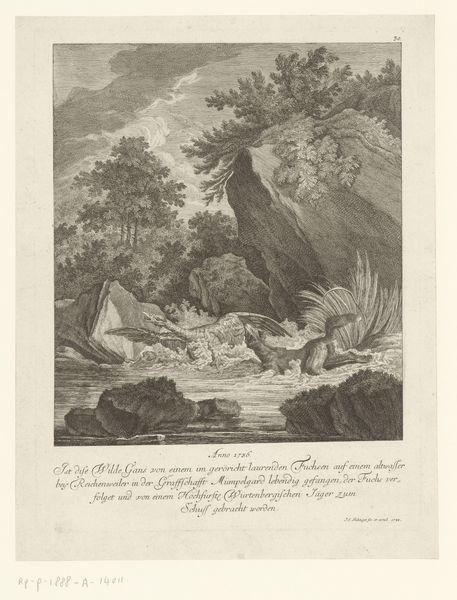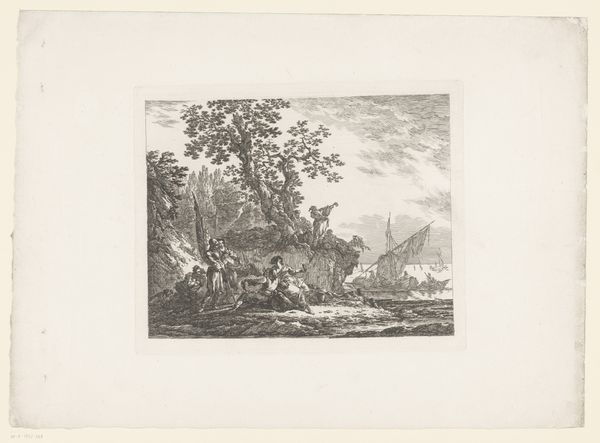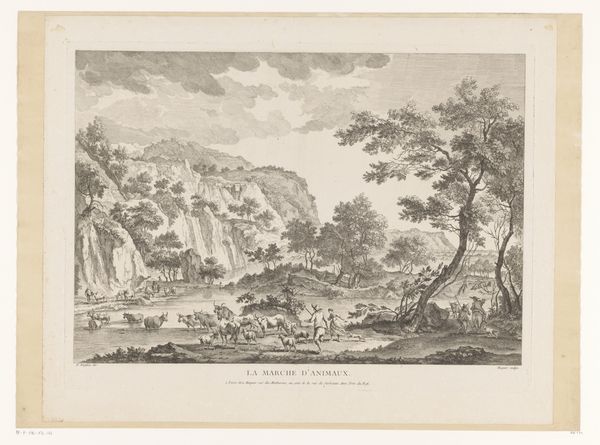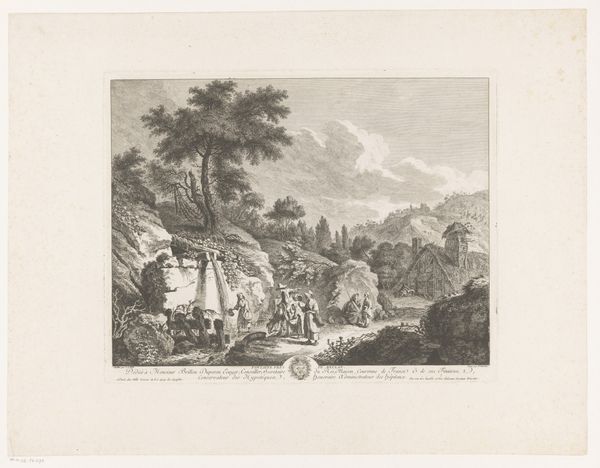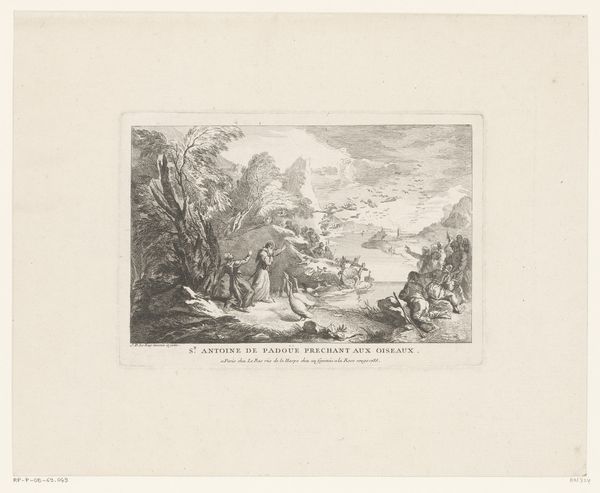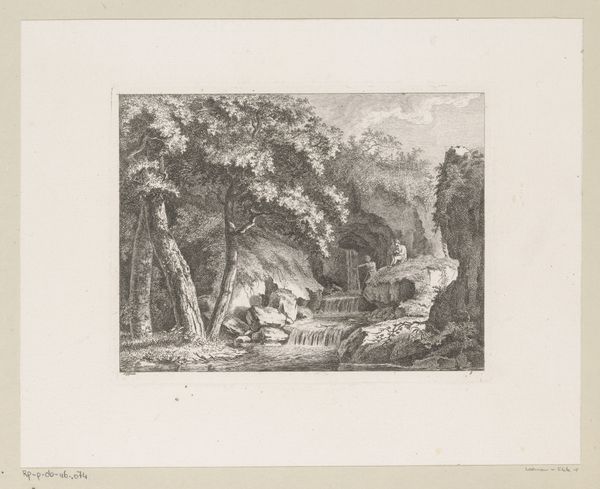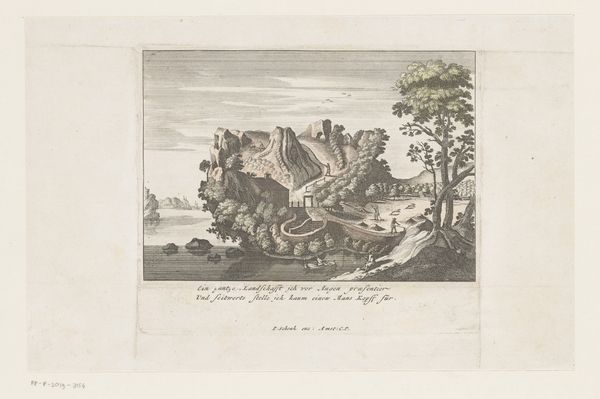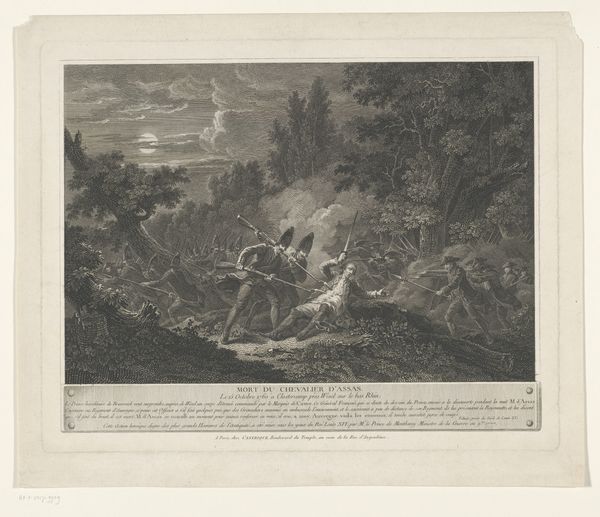
engraving
#
baroque
#
landscape
#
classical-realism
#
line
#
engraving
Dimensions: height 289 mm, width 363 mm
Copyright: Rijks Museum: Open Domain
Franz Edmund Weirotter created this etching of a river landscape with figures near a rock formation sometime in the mid-18th century. During the 1700’s, Europe was in a state of political and social transformation. The Enlightenment emphasized reason and individualism, while the aristocracy still enjoyed privilege and power. Weirotter, an Austrian artist, lived in France where the Rococo style was fashionable; his work reflects a fusion of detailed landscapes with an idealized vision of nature. Look closely at the figures in the foreground - their placement and scale suggest a narrative about the relationship between humanity and nature, reflecting societal ideals of man's place in the natural world. Weirotter’s landscapes often invite viewers to imagine themselves within the scene, perhaps appealing to those seeking respite from the rigid social structures of the time. Consider how Weirotter's etching invites us to reflect on our own relationship with the environment, and the stories we project onto the landscapes we inhabit.
Comments
No comments
Be the first to comment and join the conversation on the ultimate creative platform.

